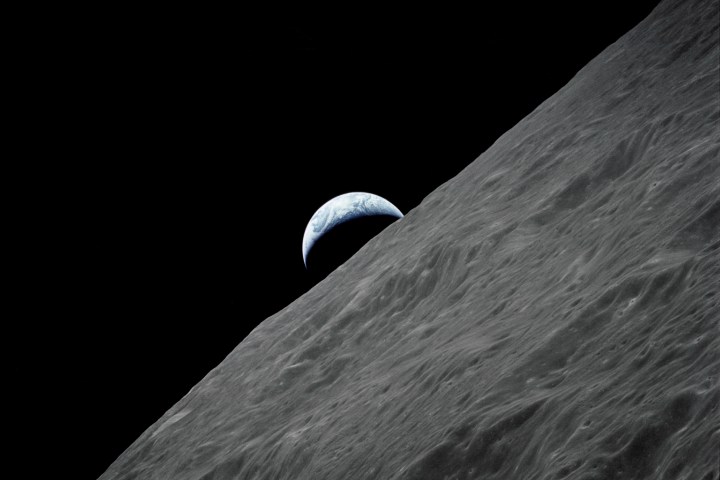
Scientists have hypothesized the presence of such subterranean chambers since the Apollo missions and a new report published in Geophysical Research Letters now officially confirms the presence of a massive lava tube in the Marius Hills region — the largest lunar volcanic dome field. Many moons ago (millions of years specifically), lava sculpted the lunar surface and as these individual channels and systems emptied over time only a hollow cavern would remain.
To date, no human has been on the lunar surface for more than three days for a number of reasons, the most notable being the fact that the moon (which has no atmosphere whatsoever) is a rather inhospitable place for earthlings. Unlike our planet, humans on the moon are subject to the perils associated with cosmic radiation, temperature fluctuations, and the risk posed by even the most minuscule of meteorites. These underground lava tubes could act as in situ shelters to shield astronauts from these hazards.
The team behind the study — comprised of scientists from NASA and JAXA, Japan’s space agency — used data from the SELENE and the twin GRAIL spacecrafts (named Ebb and Flow, respectively) to confirm this extensive lava tube. While analyzing radar data from the SELENE spacecraft, the team noticed a specific echo pattern around the Marius Hills Skylight (a site long suspected to be a lava tube). The researchers also documented similar acoustic patterns in other locations in the area suggesting that there could be more than one lava tube in the region.
While the exact number of lava tubes in this particular area is still unknown, the principle tube acoustically mapped during this study is enormous. In fact, if the data collected is correct, this subterranean cavern could theoretically house some of the largest cities in the United States.
Whether we ever actually return to the moon is anyone’s guess. Nonetheless, it looks like a potential home away from home may already be lurking beneath the lunar surface, and all we’ll need to do is spruce the place up a bit.


